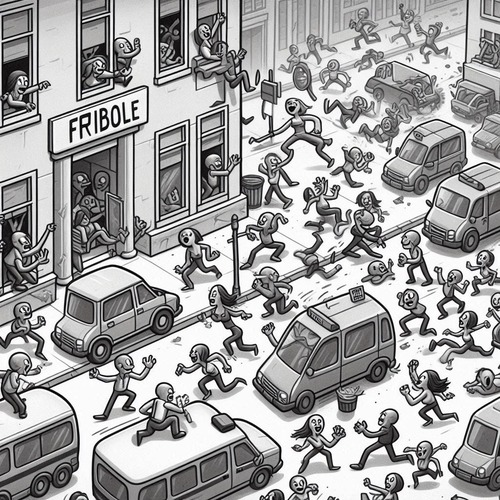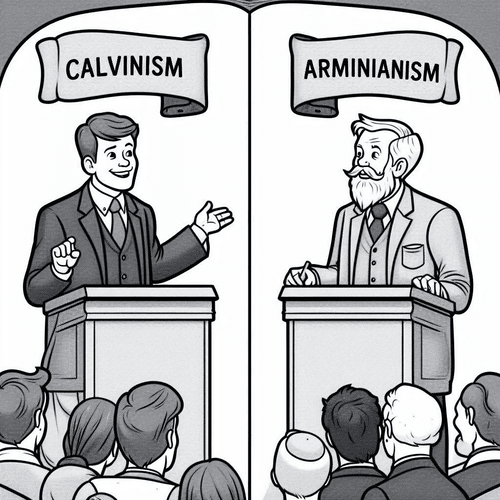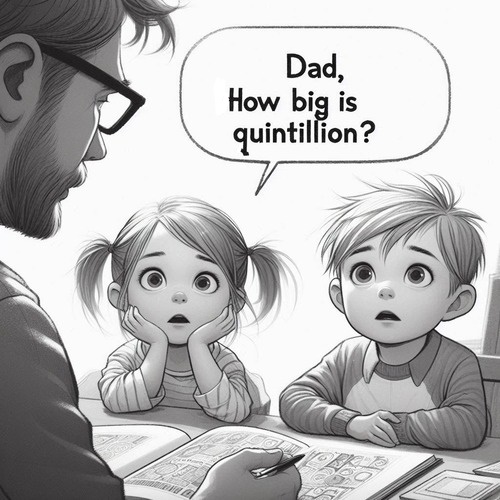The King Revealed: How Palm Sunday Fulfils Messianic Prophecy
Each year, Christians around the world commemorate Palm Sunday, waving palm branches and singing “Hosanna” as they remember Jesus’ triumphal entry into Jerusalem. Yet beyond these familiar traditions is a moment of great theological import—a divine appointment that had been centuries in the making.
Palm Sunday represents far more than just the beginning of Holy Week. It’s one of Scripture’s most dramatic fulfilments of prophecy, a deliberate unveiling of Christ’s identity before His passion. In this seemingly simple ride into Jerusalem, we witness the convergence of divine sovereignty and ancient promises: the true King reveals Himself in a way that both fulfils Scripture and challenges human expectations.
THE TRIUMPHAL ENTRY: THE BACK STORY
To appreciate the full significance of Palm Sunday, we must first understand its historical setting. The events took place during Passover week, when Jerusalem swelled with Jewish pilgrims from across the Roman Empire. The city was charged with religious fervour and political tension. Roman authorities were on high alert for any sign of insurrection during this celebration of Israel’s liberation from a previous empire.
Jesus approached from the Mount of Olives, a location rich with messianic associations in Jewish tradition. The prophet Zechariah had foretold the Lord would stand on this very mountain (Zechariah 14:4), and many Jews expected the Messiah to appear there. The timing and location were no coincidence—but rather a carefully orchestrated revelation.
Under Roman occupation, Jewish hopes for a conquering Messiah who’d overthrow their oppressors had reached a fever pitch. The people longed for the restoration of David’s kingdom and freedom from foreign rule. It’s against this backdrop that Jesus deliberately stages His entry in a way that will speak volumes to those with ears to hear.
MESSIANIC PROPHECY FULFILLED
What makes Palm Sunday so remarkable is Jesus’ deliberate fulfilment of specific messianic prophecies—particularly Zechariah 9:9-10.
The Gospel accounts make clear that Jesus intentionally arranged these details. In Matthew 21:1-7, Jesus specifically sends disciples to find a donkey and her colt, directly fulfilling Zechariah’s prophecy with remarkable precision. Matthew explicitly connects these events to prophetic fulfilment (Matthew 21:4-5).
Similarly, the crowd’s jubilant cries of “Hosanna to the Son of David! Blessed is he who comes in the name of the Lord!” echo Psalm 118:25-26, a messianic psalm traditionally associated with the coming king. This was no coincidental outburst but the fulfilment of words written centuries before.
Even the timeline aligns with Daniel’s prophecy of the 70 weeks (Daniel 9:24-27), which had provided a timeframe for the Messiah’s appearance. Jesus’ entry occurred precisely when Israel should have been watching for their Messiah according to Daniel’s prophecy.
What we witness on Palm Sunday isn’t simply an inspiring religious moment but the culmination of centuries of divine promises—a living testimony to God’s faithfulness and the authenticity of Jesus’ messianic identity.
CHRIST’S ROYAL IDENTITY PROCLAIMED
The symbols and actions of Palm Sunday proclaimed Christ’s kingship in ways that would have been unmistakable to Jewish observers. The palm branches waved by the crowd were symbols of victory and national liberation, previously used in celebrating the Maccabean revolt against foreign oppression. By accepting this reception, Jesus was allowing a clear messianic identification.
The crowd’s cries of “Hosanna” (meaning “save now”) were both a plea for deliverance and a recognition of royal authority. Their explicit reference to Jesus as “Son of David” (Matthew 21:9) was an unambiguous messianic title, acknowledging Jesus as the rightful heir to David’s throne.
Jesus’ choice to enter Jerusalem during Passover was itself significant. This feast commemorated God’s deliverance of Israel from Egyptian bondage, and now the ultimate Deliverer was entering the holy city to accomplish a greater exodus through His sacrifice.
Yet as John’s Gospel reveals, “His kingdom is not of this world” (John 18:36). The tension between the crowd’s nationalist expectations and Christ’s true mission creates a profound irony. They proclaimed the right King but misunderstood His kingdom. The King they welcomed had come not to conquer Rome but to defeat sin and death.
THE PARADOX OF THE HUMBLE KING
Palm Sunday presents us with the striking paradox of Christ’s kingship—divine sovereignty expressed through apparent weakness and humility. This paradox challenges our understanding of true power and reveals God’s upside-down kingdom values.
- Christ’s deliberate choice of a donkey over, say, a war horse: In ancient times, kings rode donkeys in times of peace and horses in times of war. Jesus deliberately chose this humble animal to signify His peaceful intentions while still claiming royal identity.
- The tension between triumph and humility: Jesus received royal acclaim while embodying profound humility in His mode of transport and appearance. This tension reveals that God’s power operates differently than worldly authority, finding strength in lowliness.
- How this challenges our understanding of power and authority: The world equates power with domination, wealth, and forceful control. Jesus demonstrates that true authority comes through service and self-giving love rather than self-exaltation.
- Reformed perspective on God’s sovereignty displayed in Christ’s humility: God’s sovereign purposes are often accomplished through means that appear weak or foolish to human eyes. The King of kings revealing Himself on a borrowed donkey exemplifies how God uses the humble to accomplish His greatest works.
THE FICKLE CROWD: FROM SHOUTS OF ‘HOSANNA’ TO ‘CRUCIFY HIM’
One of the most sobering aspects of Holy Week is the rapid shift from the crowd’s adoration on Palm Sunday to their calls for crucifixion by Friday. This dramatic reversal reveals profound truths about human nature and God’s sovereign plan.
- The rapid shift in public opinion: Within days, some of the same voices shouting “Hosanna” would cry “Crucify Him!” This stark turnabout demonstrates the superficiality of human acclaim and the danger of faith built on misunderstandings.
- Analysis of the crowd’s misunderstanding of Jesus’ mission: The people wanted a political messiah who would overthrow Rome and restore Israel’s independence. When Jesus failed to meet these nationalistic expectations, their disappointment quickly turned to rejection.
- Total depravity illustrated in human fickleness: The crowd’s rapid change of heart demonstrates humanity’s natural inability to truly recognise or submit to God’s authority apart from divine grace. Our hearts naturally resist God’s ways when they conflict with our desires and expectations.
- God’s sovereignty over human actions and intentions (Acts 2:23): Even the rejection of Christ was encompassed within God’s redemptive plan. As Peter would later preach, Jesus was “delivered up according to the definite plan and foreknowledge of God” (Acts 2:23).
CONCLUSION: PALM SUNDAY AS FORESHADOWING
Palm Sunday not only fulfils past prophecies but also foreshadows future glory. The triumphal entry offers a glimpse of Christ’s final return, when He will come not on a donkey but on a white horse (Revelation 19:11-16), not to suffer but to reign.
The crowd’s cries of “Hosanna” anticipate the day when “every knee shall bow” and “every tongue confess that Jesus Christ is Lord” (Philippians 2:10-11). Their waving palm branches foreshadow the scene in Revelation 7:9, where a great multitude stands before the throne with palm branches in hand.
Even Jerusalem itself, which received its King only to reject Him, points forward to the New Jerusalem where Christ will reign unchallenged. Palm Sunday thus stands as a prophetic bridge, connecting ancient promises to their partial fulfilment in Christ’s first coming and their complete fulfilment at His return.
In Reformed theology, this tension between the “already” and “not yet” of Christ’s kingdom is central. Palm Sunday reminds us that while Christ’s kingship has been established, its full manifestation awaits His return. We live in the time between the two triumphal entries—the first in humility, the second in glory.
RELATED FAQs
Why did Jesus weep over Jerusalem during His Palm Sunday entry? Despite the jubilant reception, Luke records Jesus wept over Jerusalem, foreseeing its coming destruction. This poignant moment reveals Christ’s deep compassion for those who’d soon reject Him and His perfect knowledge of future events. It demonstrates that even in His moment of public acclaim, Jesus remained focused on the spiritual condition of the people and of His mission.
- What is the significance of the crowd spreading their cloaks on the road? The spreading of cloaks was an ancient custom showing honour to royalty, as seen when Jehu was proclaimed king in 2 Kings 9:13. This action showed the crowd’s recognition of Jesus’ royal status beyond just the palm branches. It represented the giving of their possessions and submission to His authority.
- Did Jesus’ Palm Sunday entry fulfil prophecies beyond Zechariah 9:9? Yes, Jesus’ timing fulfilled Daniel’s 70 weeks prophecy (Daniel 9:24-27) which provided a precise timeframe for Messiah’s appearance. Additionally, Jesus’ approach from the Mount of Olives is connected to Zechariah 14:4, which states the Messiah would stand on that mountain. These multiple prophetic fulfilments created a powerful convergence of evidence for Christ’s identity.
- How did the Pharisees react to Jesus’ triumphal entry? Luke 19:39-40 records the Pharisees asking Jesus to rebuke His disciples for their messianic acclamations. Jesus responded that if the people were silent, “the very stones would cry out.” This exchange reveals the religious leaders’ opposition to Jesus’ messianic claims and Jesus’ affirmation that His identity must be proclaimed because it is foundational to God’s redemptive plan.
- What is the connection between Palm Sunday and the Jewish Feast of Tabernacles? While Palm Sunday occurred during Passover week, the palm branches and “Hosanna” cries had strong associations with the Feast of Tabernacles, when the people waved palm branches and recited Psalm 118. This connection suggests the crowd was expressing hope that Jesus was inaugurating the messianic kingdom associated with Tabernacles. The overlap of these feast symbols reveals how Jesus fulfilled expectations associated with multiple Jewish festivals.
- Why did Jesus curse the fig tree immediately after Palm Sunday? Mark’s Gospel places Jesus’ cursing of the fruitless fig tree immediately after His entry, creating a powerful symbolic action. The fig tree represented Israel, which, like the Palm Sunday crowd, showed outward signs of life but lacked true spiritual fruit. This acted as a prophetic sign of judgment upon empty religious observance without genuine faith and obedience.
How did early Christians commemorate Palm Sunday before it became an official church observance? Early Palm Sunday observances began in Jerusalem around the 4th century with processions retracing Jesus’ entry route. Christians would carry palm and olive branches while singing hymns as they processed from the Mount of Olives into Jerusalem. This practice spread throughout the Christian world, with various local traditions developing before Palm Sunday became formally established in the church calendar.
OUR RELATED POSTS
Editor's Pick
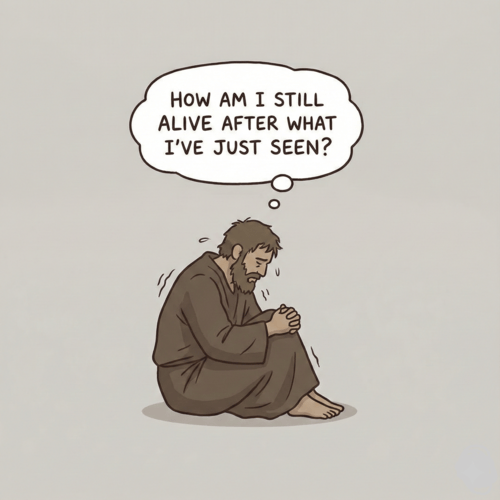
The Throne-Room Vision: Who Did Isaiah See?
The scene is unforgettable: Isaiah stands in the temple, and suddenly the veil between heaven and earth tears open. He [...]
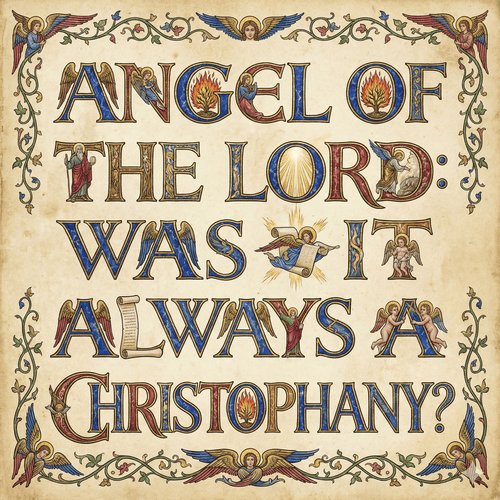
The Angel of the Lord: Can We Be Certain It Was Christ All Along?
Throughout the Old Testament, a mysterious figure appears: the Angel of the LORD. He speaks as God, bears God’s name, [...]
SUPPORT US:
Feel the Holy Spirit's gentle nudge to partner with us?
Donate Online:
Account Name: TRUTHS TO DIE FOR FOUNDATION
Account Number: 10243565459
Bank IFSC: IDFB0043391
Bank Name: IDFC FIRST BANK



